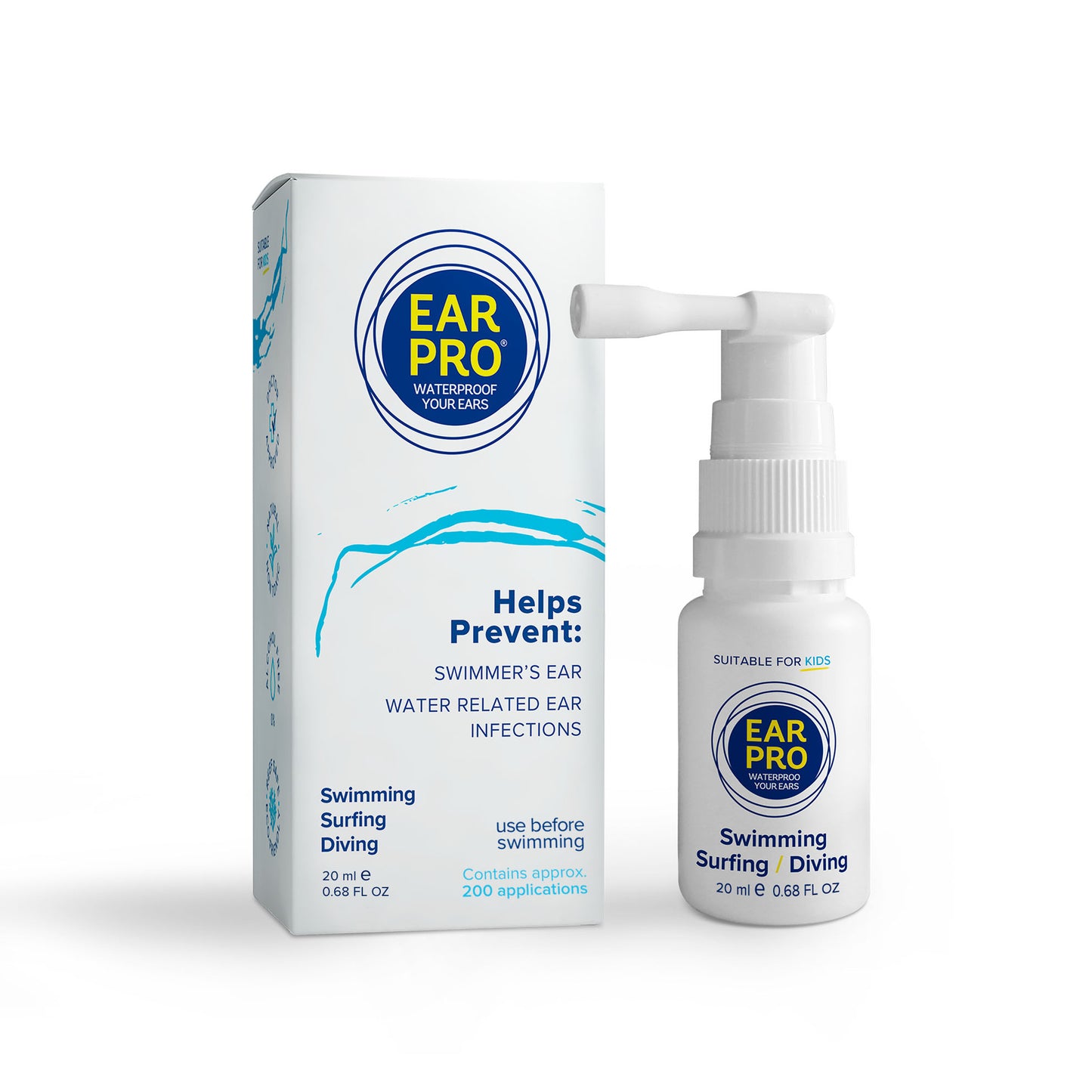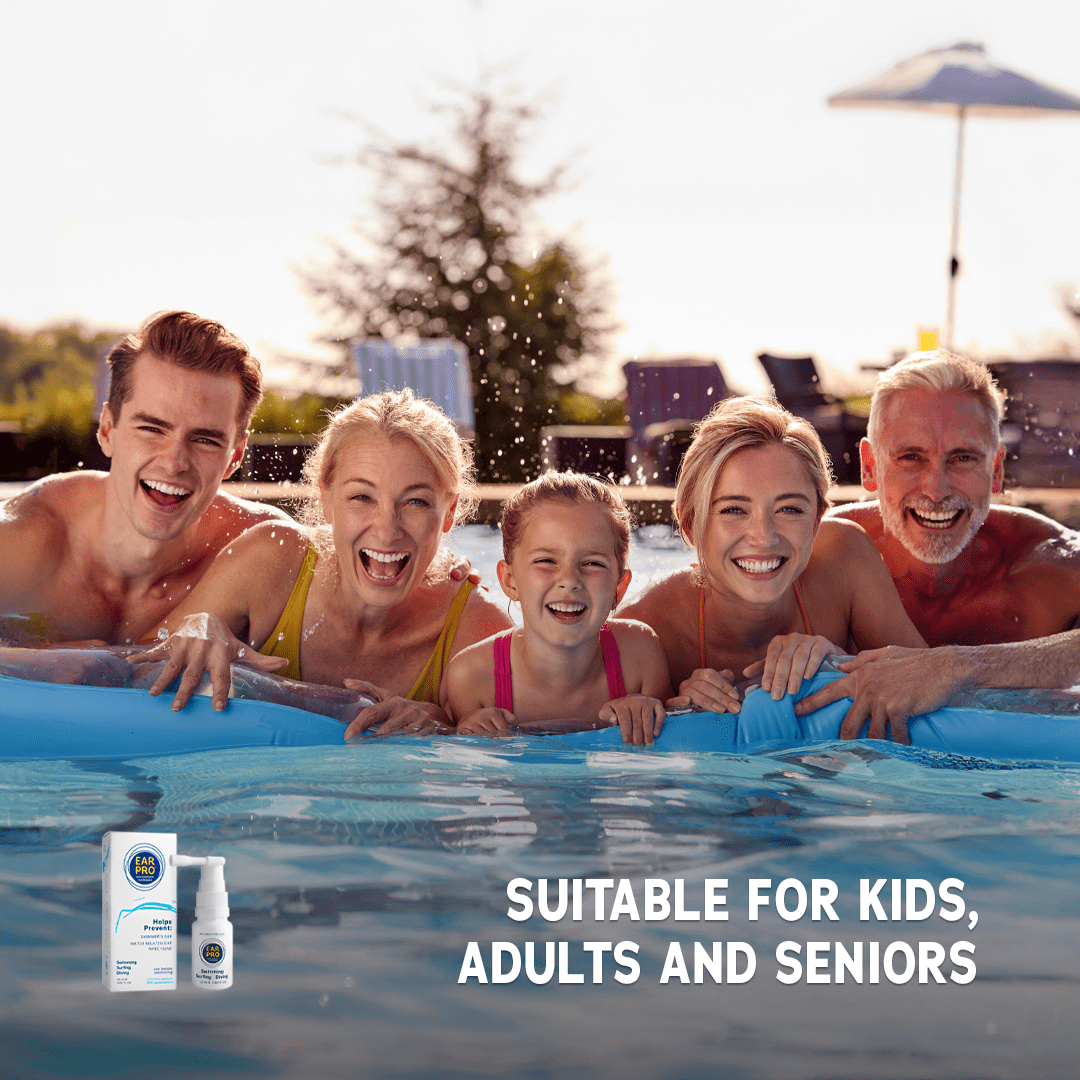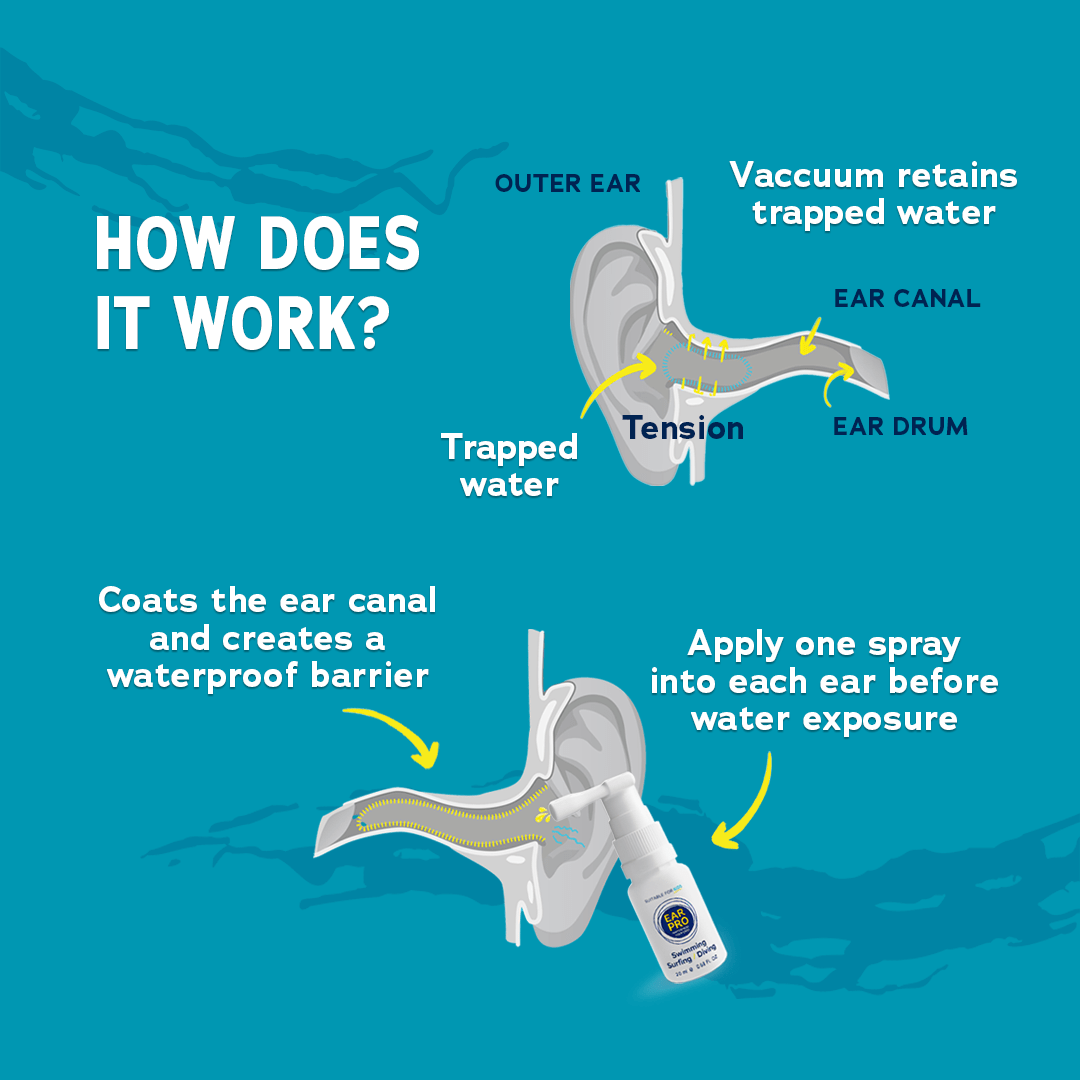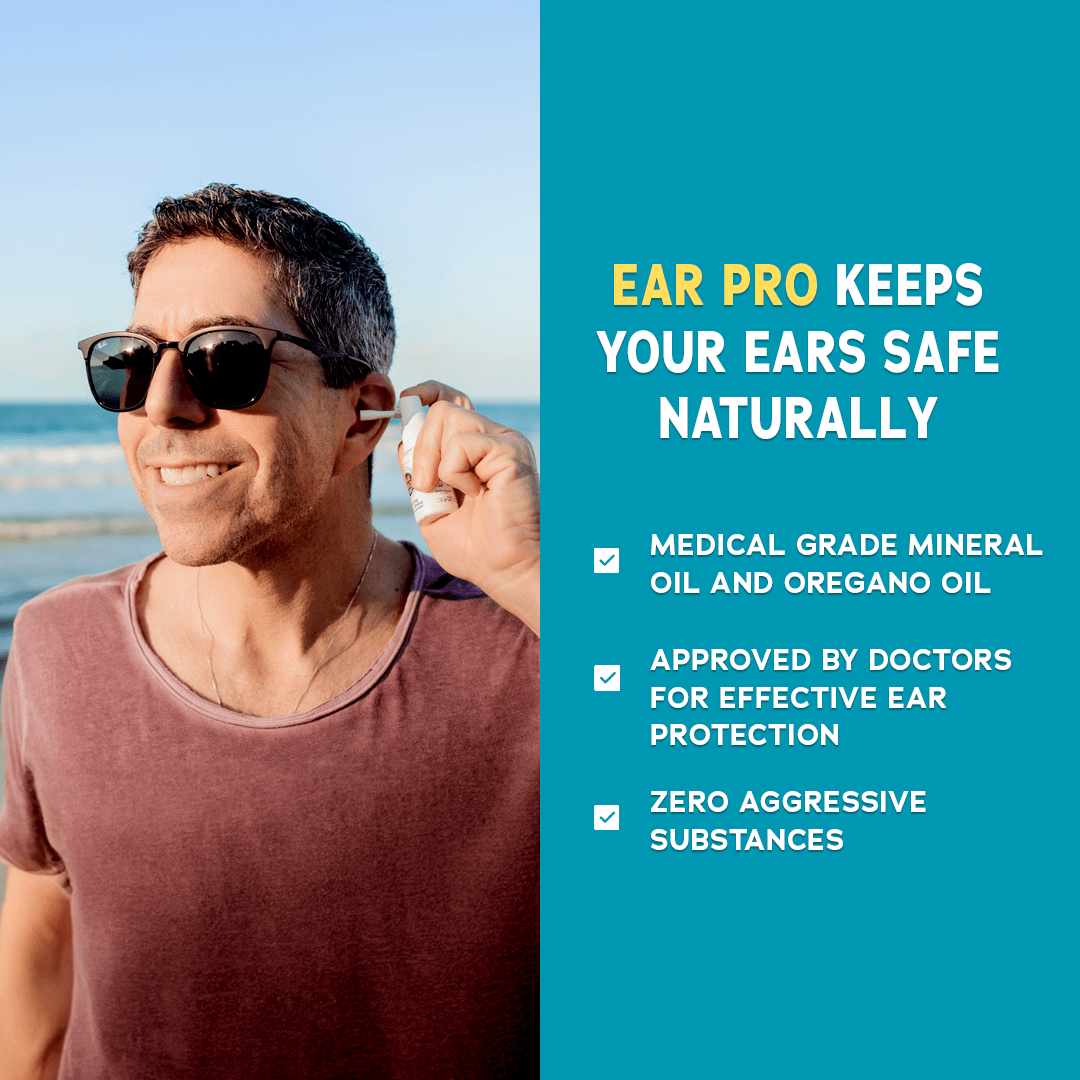Enjoying the pool, a seaside holiday, or even a steamy shower should not cost you clear sound. Pool water seeps into the canal, salt spray corrodes delicate microphones, and trapped moisture sparks painful infections.
Ear Pro’s mineral-oil formula creates a gentle, hydrophobic film that keeps canals dry without stinging alcohol, exactly the barrier active people with hearing technology need.
This guide details how swimmers with hearing aids can use effective ear protection and smart device care for worry-free swimming.
Table of Contents
1. Understanding the Risks of Water Exposure for Hearing Aid Users
2. Selecting Water-Resistant Hearing Aids
3. Utilizing Protective Accessories for Moisture Prevention
4. Best Practices for Swimming and Water Activities
5. Post-Exposure Care and Maintenance Tips
6. Conclusion
7. Frequently Asked Questions
Understanding the Risks of Water Exposure for Hearing Aid Users
How Moisture Damages Delicate Electronics
Trapped water corrodes microphones, battery contacts, and circuit boards, often voiding warranties.
The National Institute on Deafness and Other Communication Disorders advises keeping hearing aids “away from heat and moisture” for longevity. Failing to do so can shorten a device’s life by up to 30 percent.
Ear Canal Health and Infection Risk
Lingering water raises humidity inside the ear, an ideal breeding ground for swimmer’s ear.
The CDC recommends ear-drying drops and strict drying routines to stop infections before they start.
Implementing these steps alongside ear protection designed for swimmers with hearing aids will keep both ear tissue and electronics secure.
Selecting Water-Resistant Hearing Aids
Decoding IP Ratings
Look for IP68 or higher; the first digit measures dust, the second measures water. This rating indicates devices can withstand continuous immersion, providing basic daily moisture protection for hearing aids.
Comparing Water-Resistant Hearing Aids
Premium brands now coat inner circuits with nano-sealants. Offering an alternative to bulky sleeves, these features improve the reliability of ear protection for swimmers with hearing aids in situations involving light splashes or rain showers.
Swimming with Hearing Aids- Quick Reference Glossary
|
Term |
Meaning |
|
IP68 |
Device tested for dust-tight sealing and full immersion beyond 1 m depth |
|
Desiccant |
A drying agent that draws moisture from electronics |
|
Mineral-Oil Barrier |
A thin hydrophobic layer formed by Ear Pro to stop water entry |
Utilizing Protective Accessories for Moisture Prevention
Choosing Waterproof Hearing Aid Accessories
Silicone sleeves and vented swim molds redirect spray while allowing sound in. Match the accessory shape to your device style (BTE, RIC, ITE) so microphones stay uncovered.
Using Protective Hearing Aid Covers Effectively
Thin neoprene wraps slip over behind-the-ear housings and wick away condensation. Applying a quick mist of Ear Pro before activity, in conjunction with these covers, provides a dual barrier and reinforces ear protection specifically for swimmers with hearing aids.
Best Practices for Swimming and Water Activities
Swimming with Hearing Aids- Pre-Swim Routines
1. Apply Ear Pro in both ears, following the “one spray, one tilt” method
2. Remove devices and store them in a vented, splash-proof case
3. Swim molds or vented plugs are ideal in high turbulence, preserving sound cues better than solid options and enhancing ear protection for swimmers who use hearing aids in loud pool environments
Ear Pro’s mineral oil lines the canal, while oregano oil offers mild antimicrobial action.
Post-Exposure Care and Maintenance Tips
Immediate Drying Techniques and Hearing Aid Drying Solutions
This study shows that silica-gel desiccants reduced hearing-aid humidity far better than uncooked rice (a common home remedy).
After swimming, pat devices with a lint-free cloth, open battery doors, and place them in an approved jar for at least eight hours to prevent water damage to hearing aids.
Long-Term Hearing Aid Maintenance Tips
-
Schedule quarterly professional cleanings
-
Replace mic filters every three months
-
Keep backup batteries in a sealed pouch
These habits, combined with daily Ear Pro, provide year-round robust ear protection for hearing aid-wearing swimmers.
Conclusion
Water adventures and reliable amplification can coexist. Choose sealed devices, layer on accessories, mist Ear Pro before every splash, and dry gear thoroughly afterward.
These steps assure both swimming safety with hearing devices and their continued functionality.
Ready to build your waterproof routine? Pick up an Ear Pro 20 ml spray today and keep enjoying life, sound, and swim intact.
Frequently Asked Questions
1. Can I swim with my hearing aids on?
Manufacturers advise removing standard devices before entering the pool or ocean. Store them in a vented, splash-proof case, and use canal sprays or custom swim molds to keep your ears dry and your hearing aids safe.
2. What accessories help protect hearing aids from water?
Silicone swim molds, snap-on neoprene covers, waterproof storage cases, and mineral-oil ear sprays create layered protection that blocks splashes and keeps electronics dry.
3. How do I dry my hearing aids after they get wet?
Gently blot with a lint-free cloth, open battery doors, and place the aids in a silica-gel desiccant jar or electric drying box for at least eight hours.
4. Are there waterproof hearing aids available?
Yes. Several brands offer IP68-rated models designed to resist continuous immersion; however, adding external barriers (like ear sprays and covers) gives you extra peace of mind.










